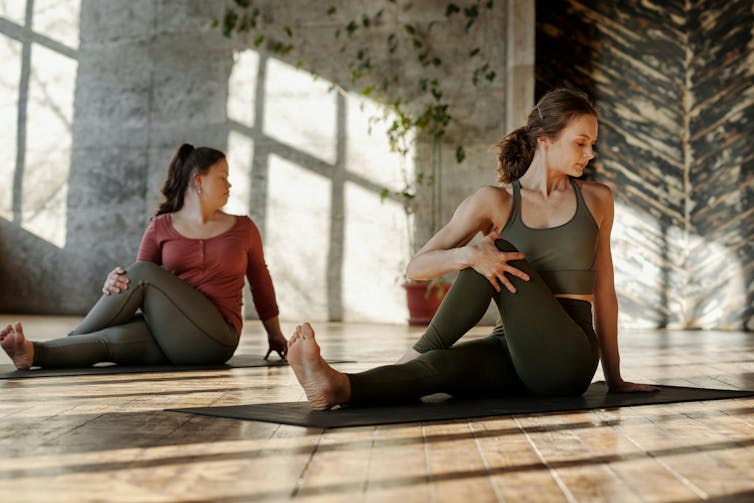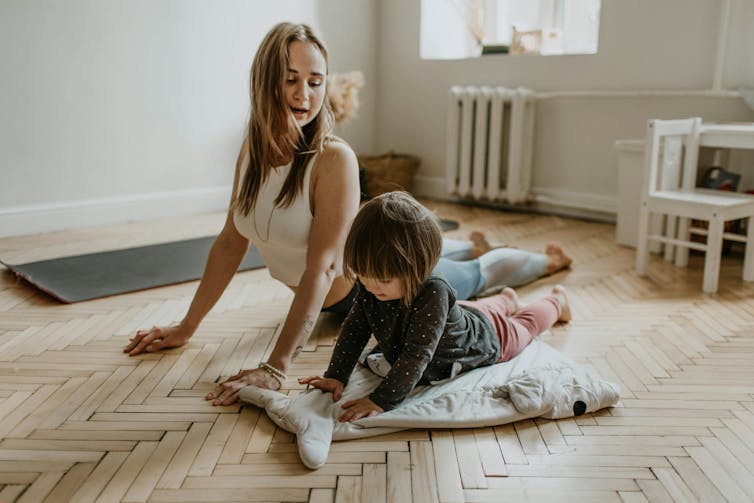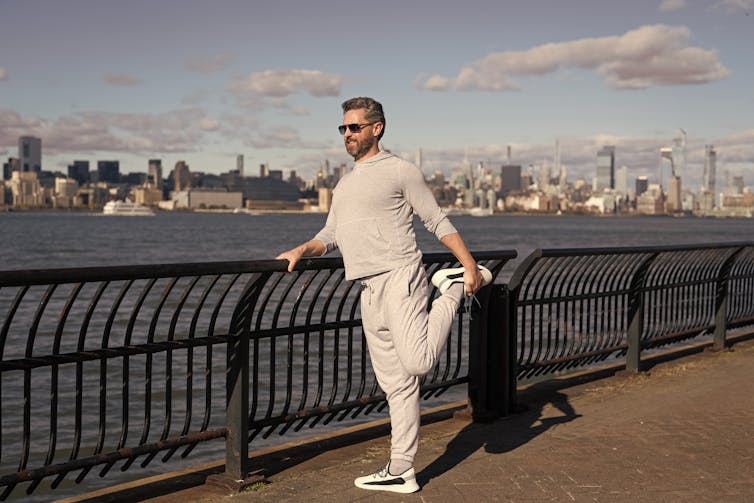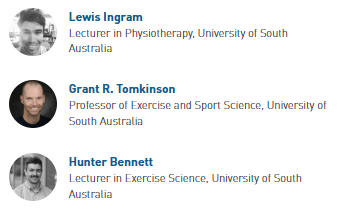
Assessing the data
Our research team spent the past year gathering data from hundreds of studies on thousands of adults from around the world. We looked at 189 studies of more than 6,500 adults.
The studies compared the effects of a single session or multiple sessions of static stretching on one or more flexibility outcomes, compared to those who didn’t stretch.
How long?
We found holding a stretch for around four minutes (cumulatively) in a single session is optimal for an immediate improvement in flexibility. Any longer and you don’t appear to get any more improvement.
For permanent improvements in flexibility, it looks like you need to stretch a muscle for longer – around ten minutes per week for the biggest improvement. But this doesn’t need to occur all at once.
How hard?
You can think of stretching as being hard, when you stretch into pain, or easy, when the stretch you feel isn’t uncomfortable.
The good news is how hard you stretch doesn’t seem to matter – both hard (stretching to the point of discomfort or pain) and easy stretching (stretching below the point of discomfort) equally improve flexibility.

How often?
If you are looking to improve your flexibility, it doesn’t matter how often you stretch each week. What is important is that you aim for up to ten minutes per week for each muscle that you stretch.
So, for example, you could stretch each muscle for a little more than one minute a day, or five minutes twice a week.
The amount of time you should spend stretching will ultimately depend on how many muscles you need to stretch. If you are less flexible, you will likely need to dedicate more time, given you’ll have more “tight” muscles to stretch compared to someone more flexible.
Can everyone improve their flexibility?
Encouragingly, it doesn’t matter what muscle you stretch, how old you are, your sex, or whether you are a couch potato or an elite athlete – everyone can improve their flexibility.
Static stretching can be done anywhere and at any time. And you don’t need any equipment. You can stretch while watching your favourite TV show, when in the office, or after walking the dog to help you relax. It’s a great way to start and end your day.

Although the exact stretches needed will depend on which muscles are “tight”, examples of some very common stretches include:
- placing one foot upon on bench and leaning forward at the waist while keeping your knee straight to stretch your hamstrings
- bending your knee and holding your ankle against your buttock to stretch your quadriceps muscles
- reaching one arm while bending your elbow to stretch your triceps muscles.
However, the best advice is to visit a qualified health professional, such as a physiotherapist or exercise physiologist, who can perform an assessment and prescribe you a list of stretches specific to your individual needs.
As you can see, it really isn’t too much of a stretch to become more flexible.![]()
Lewis Ingram, Lecturer in Physiotherapy, University of South Australia; Grant R. Tomkinson, Professor of Exercise and Sport Science, University of South Australia, and Hunter Bennett, Lecturer in Exercise Science, University of South Australia
This article is republished from The Conversation under a Creative Commons license. Read the original article.


